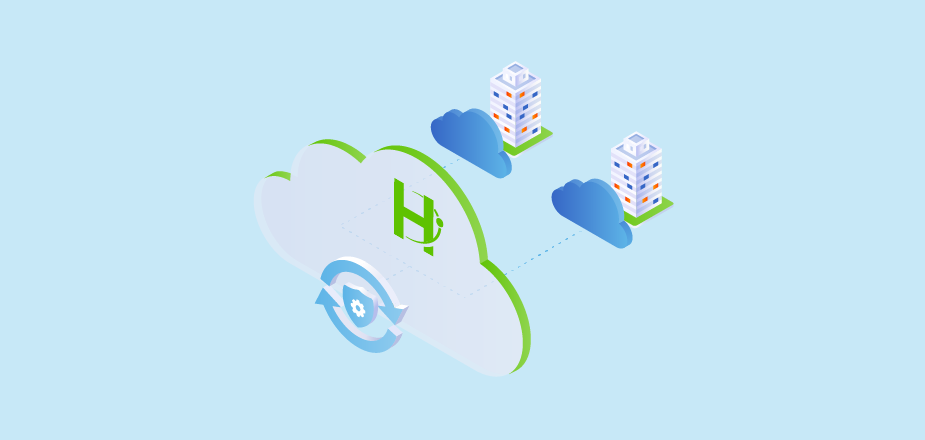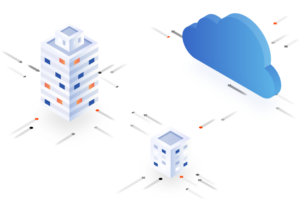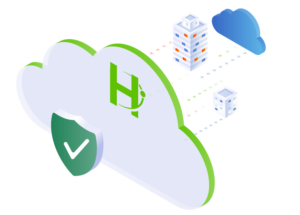Remote access trojans. Weak passwords. OS vulnerabilities. Sysadmin errors. Arson. Theft. Even pandemics. For your cloud-based, hyper-distributed business, the threats just keep piling up. The perils of running infrastructure at scale have never been greater, and no matter what precautions you take, the question is when (not if) your systems will go down. The follow up question is: will you be able to recover?
When You Stand to Lose Everything, Don’t Lose Your Data
Even when you’re under attack or in the middle of a failure scenario, your cloud provider — IaaS, PaaS, or SaaS — will try to mitigate down-time, and your enterprise network provider will strive to meet their SLAs. But what about your data? No amount of 9’s in your providers’ availability will help if your data — your most valuable asset — is lost. Infrastructure can be replaced, endpoints can be severed, but your data is truly the identity of your business. If your data is compromised, it’s all over.
Or is it? If you map out all your organization’s data with a first principles mindset, you will see that all of it — databases, media, file shares — is tied to apps. Data doesn’t exist in isolation — it’s always generated and used by applications. Therefore, to rescue your business from a disaster, you need an app-centric approach to data protection. For example, iIf your Exchange data is compromised or the server goes down, recover from the latest clean backed up copy to a secure environment and you can control damage significantly. In short, revive your app and corresponding data from a clean point in time, and you’re on your way back to business.
A Clean, Backed Up Copy of Your App Data Is Your Escape Route from Disaster
Great! So why not just continuously back up app data and restore the latest copy when a system goes down? Well, the cost for continuous data protection for all your apps sufficiently far back in time would be unsustainable. And how do you know if your backup copy (VADP-based snapshots or journal-based I/O stream) has not inherited the malware infecting production?
One of our key learnings serving customers here at Cohesity is that not all apps are equally critical. Which is why enterprises all over the world have invested in the most optimal solution for each type of workload. Mission-critical apps are continuously protected and replicated to a second site, while tier-2 and business-critical apps are snapshotted once in a while and backed up locally or in cloud. Some data doesn’t make the cut for backup and are sent to cold buckets and archived. And each solution is different.
Can you see what is wrong with this strategy? It’s fragmented. Recovery is a complex operation that involves the successful execution of multiple scripts and orchestrators, failing over to another site or cloud, restoring hundreds of applications, and securing the interim environment. During recovery, your DR plan is only as good as the weakest link in your recovery chain. It doesn’t matter if your mission-critical app recovers within seconds if there’s a dependency on data that hasn’t been snapshotted in weeks. The result? Failed restores, customer data loss, erratic performance, and worse.
Your Investment in ‘Best-of-Breed’ Solutions Might Not Be as Good as You Think
We have heard from customers that have recovered from complex attacks in minutes, and we have also heard horror stories of legacy technologies not able to effect a full-scale recovery for weeks. The key difference in these two groups of companies is the former has taken a platform approach to data protection and automated recovery, whereas the latter has implemented a set of point products for different protection strategies and SLAs. It doesn’t matter if you have the shortest RTO and RPO for your mission-critical apps and rich, hydrated snapshots implemented separately for your business-critical apps — during recovery, there will be dependencies across these entities, and the incompatibilities between point products — no matter how good individually — will slow down your recovery. The reason why hyperscale services — GMail, YouTube, Instagram — are so resilient is that they all have a single, logical, web-scale platform for their data, which helps universally index exabytes of data and create efficient metadata, create efficiencies in policy management, deduplicate and reduce data volume, and simplify automation and orchestration when stuff hits the ceiling.
Your Recovery Plan Needs to Be Integrated, Intentional, and Intelligent
The difference between instant recovery and catastrophe for your business can be broken down into 3 workable steps:
- invest in business continuity technology that is ‘platformized’ and not pieced together,
- fortify the weak links in your plan so they don’t block your overall recovery, and
- test and automate your plan so it executes seamlessly at the time you need it most
A single platform for data recovery across prem and cloud ensures that elements of your recovery don’t get in each other’s way. Should disaster strike, a software platform with an intent-based, unified policy engine managed through a single interface or API starts a recovery process that ripples across your entire data estate. This ensures that different tiers of apps and data recover seamlessly, cascading across dependencies and criticalities. Of course, the platform needs to be self-protected — possess properties of immutability, continuous protection, and intelligent threat detection — so as not to propagate infected data.
Cohesity: A Ctrl-Z for IT Disasters
While there is always more to do to get simply ‘undoing’ a complex, wide-ranging attack or failure with the push of a button, we at Cohesity have listened to customers, iterated, and closely followed failure scenarios to design SiteContinuity to intelligently unify backup, ransomware defense, and disaster recovery across all groups of enterprise applications. Yes, we have some of industry’s best RPO and RTO numbers, are a Leader in Backup and Recovery, and are built on a multicloud file system that brings hyperscale-level efficiencies and manageability to enterprise data, but those are not the reasons why you should explore SiteContinuity. It is because we’re helping customers create a paradigm shift in the way they’re doing backup and disaster recovery. Cohesity delivers incredible results in ‘platformizing’ data protection and delivering lightning quick recoveries, all while continuously lowering costs.
A powerful, intent-based policy framework to protect all your (mission-critical and business-critical) apps underneath a simple drag and drop UI that automates some of the most complex DR operations, SiteContinuity helps you break down your backup and DR silos onto a seamless multicloud software platform. Featuring native ML-powered anti-ransomware capabilities, global file auditing, and instant recovery at scale, Cohesity helps customers rethink DR from an age-old insurance policy to an active, ready-to-go threat-remediation mechanism. Effectively recovering your data is a way out of even the most devastating IT disasters, and Cohesity is here to make sure your data is safe.
SiteContinuity is now GA with Cohesity 6.6! Learn more about SiteContinuity on this blog.
Discover what SiteContinuity can do for you.
See how customers are using Cohesity in their DR plans.

















